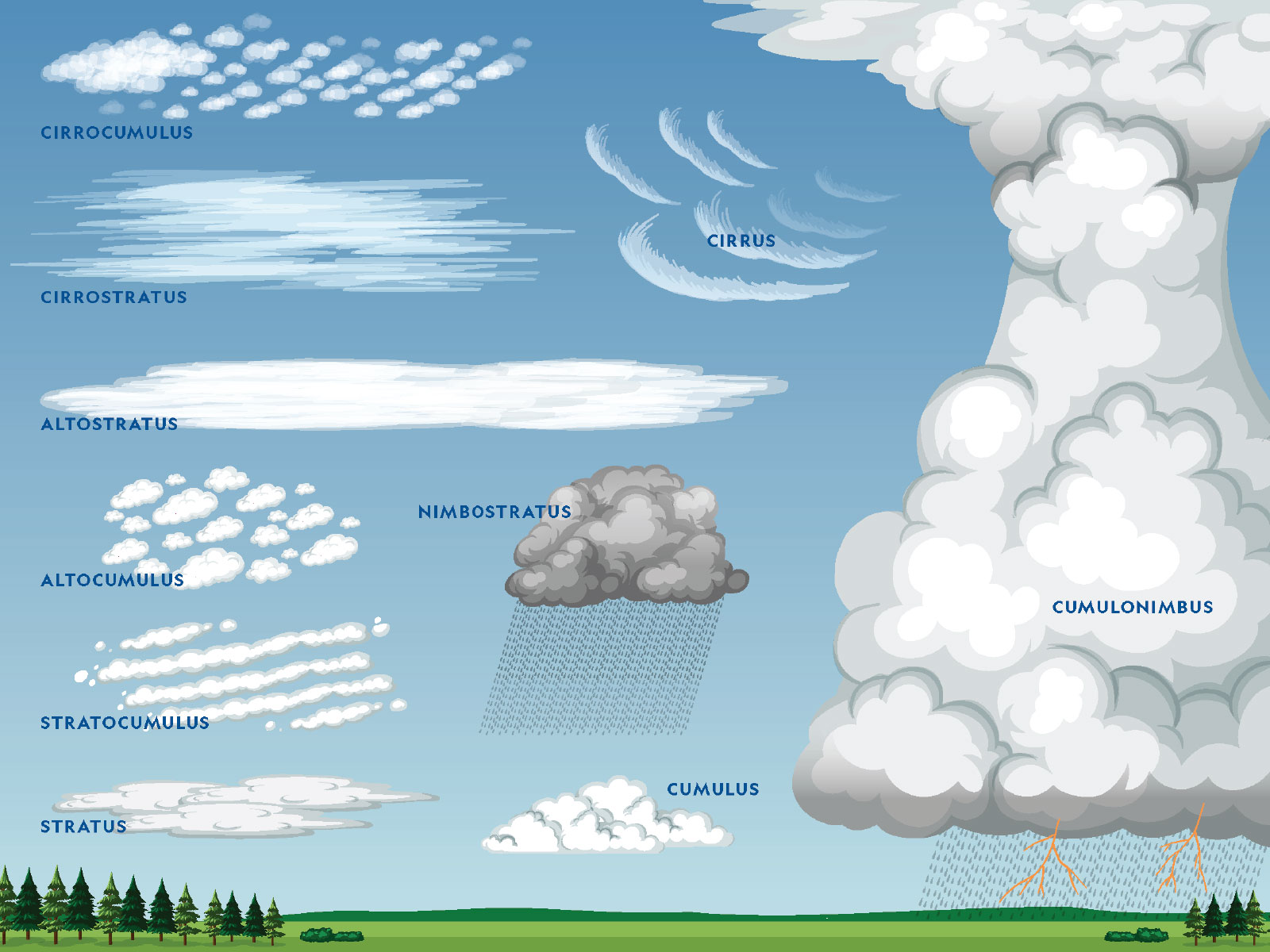We see clouds in the sky almost every day! Different kinds of clouds mean different kinds of weather. Meteorologists study these to help understand the weather.
Clouds are made up of tiny droplets of water or ice. Water vapor is the gas phase of water.
Most form as warm air rises into the atmosphere and then cools down. Warm air can hold more water vapor than cold air can. As more and more air cools down, more droplets form, and they eventually become a cloud! Clouds float in the air because the warm air rising keeps the water vapor afloat. Rain falls when they become so full of water that they condense into larger droplets than can’t be kept afloat.
Clouds can be described by their type and their elevation.
- High clouds form above 20,000 feet. It is very cold higher up, so these clouds are mostly ice crystals. high level cloud names include: “cirro” or “cirrus.”
- Mid-level clouds form between 6,500 and 20,000 feet. They have a mixture of ice crystals and water droplets. Mid-level cloud names include “alto.”
- Low clouds form below 6,500 feet and are mostly water droplets. These cloud names include “stratus.”
There are even vertical clouds! These are very tall and spread through many levels.

There are ten main cloud types:
HIGH
- cirrus – thin and wispy, indicate good weather
- cirrocumulus – look like tiny cotton balls bunched together
- cirrostratus – high, flat clouds that spread across large parts of the sky, can indicate rain in the next day or so
MID-LEVEL
- altostratus – form a gray covering, a sign of rain
- altocumulus – white, small and puffy
- nimbostratus – low, puffy and gray, might rain or turn into cumulonimbus clouds
LOW
- stratus – flat, gray clouds that cover lots of the sky, indicate light rain
- stratocumulus – low, puffy, gray clouds which produce rain or turn into cumulonimbus
VERTICAL
- cumulus – big, white, puffy clouds, usually means good weather
- cumulonimbus – very tall, can cause big thunderstorms with heavy rain, hail or even tornadoes
A cloud that forms on the ground is called fog.
Do you think you can predict the weather now that you know about the different kinds of clouds?
